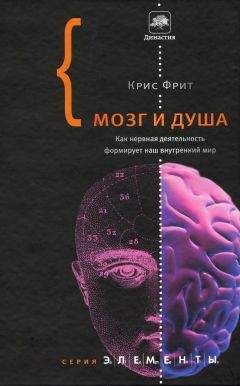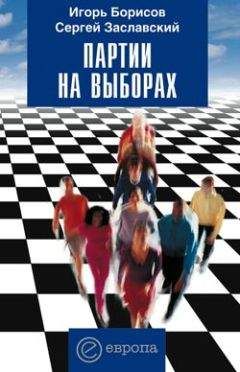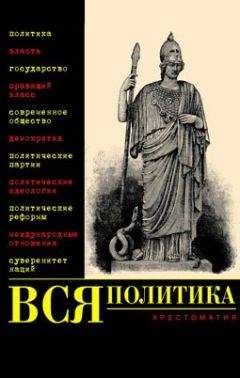goods or power. But in many instances, such as love relation-
ships or faked friendships, it is not so easy to see what the psy-
chopath is after. Without wandering too far afield into spiritual
speculations - a problem Cleckley also faced - we can only say
that it seems to be that the psychopath enjoys making others
suffer. Just as normal humans enjoy seeing other people happy,
or doing things that make other people smile, the psychopath
enjoys the exact opposite.
Anyone who has ever observed a cat playing with a mouse
before killing and eating it has probably explained to them-
selves that the cat is just “entertained” by the antics of the
POLITICAL PONEROLOGY
23
mouse and is unable to conceive of the terror and pain being
experienced by the mouse. The cat, therefore, is innocent of
any evil intent. The mouse dies, the cat is fed, and that is na-
ture. Psychopaths don’t generally eat their victims.
Yes, in extreme cases of psychopathy, the entire cat and
mouse dynamic is carried out. Cannibalism has a long history
wherein it was assumed that certain powers of the victim could
be assimilated by eating some particular part of them. But in
ordinary life, psychopaths don’t normally go all the way, so to
say. This causes us to look at the cat and mouse scenario again
with different eyes. Now we ask: is it too simplistic to think
that the innocent cat is merely entertained by the mouse run-
ning about and frantically trying to escape? Is there something
more to this dynamic than meets the eye? Is there something
more than being “entertained” by the antics of the mouse trying
to flee? After all, in terms of evolution, why would such behav-
ior be hard-wired into the cat? Is the mouse tastier because of
the chemicals of fear that flood his little body? Is a mouse fro-
zen with terror more of a “gourmet” meal?
This suggests that we ought to revisit our ideas about psy-
chopaths with a slightly different perspective. One thing we do
know is this: many people who experience interactions with
psychopaths and narcissists report feeling “drained” and con-
fused and often subsequently experience deteriorating health.
Does this mean that part of the dynamic, part of the explanation
for why psychopaths will pursue “love relationships” and
“friendships” that ostensibly can result in no observable mate-
rial gain, is because there is an actual energy consumption?
We do not know the answer to this question. We observe,
we theorize, we speculate and hypothesize. But in the end, only
the individual victim can determine what they have lost in the
dynamic - and it is often far more than material goods. In a
certain sense, it seems that psychopaths are soul eaters or “Psy-
chophagic”.
In the past several years, there are many more psychologists
and psychiatrists and other mental health workers beginning to
look at these issues in new ways in response to the questions
about the state of our world and the possibility that there is
24
EDITOR’S PREFACE
some essential difference between such individuals as George
W. Bush and many so-called Neocons, and the rest of us.
Dr. Stout’s book has one of the longest explanations as to
why none of her examples resemble any actual persons that I
have ever read. And then, in a very early chapter, she describes
a “composite” case where the subject spent his childhood blow-
ing up frogs with fire-crackers. It is widely known that George
W. Bush did this, so one naturally wonders...
In any event, even without Dr. Stout’s work, at the time we
were studying the matter, we realized that what we were learn-
ing was very important to everyone because as the data was
assembled, we saw that the clues, the profiles, revealed that the
issues we were facing were faced by everyone at one time or
another, to one extent or another. We also began to realize that
the profiles that emerged also describe rather accurately many
individuals who seek positions of power in fields of authority,
most particularly politics and commerce. That’s really not so
surprising an idea, but it honestly hadn’t occurred to us until
we saw the patterns and recognized them in the behaviors of
numerous historical figures and, lately, including George W.
Bush and members of his administration.
Current day statistics tell us that there are more psychologi-
cally sick people than healthy ones. If you take a sampling of
individuals in any given field, you are likely to find that a sig-
nificant number of them display pathological symptoms to one
extent or another. Politics is no exception, and, by its very na-
ture, would tend to attract more of the pathological “dominator
types” than other fields. That is only logical, and we began to
realize that it was not only logical, it was horrifyingly accurate;
horrifying because pathology among people in power can have
disastrous effects on all of the people under the control of such
pathological individuals. And so, we decided to write about this
subject and publish it on the Internet.
As the material went up, letters from our readers began to
come in thanking us for putting a name to what was happening
to them in their personal lives as well as helping them to under-
stand what was happening in a world that seems to have gone
completely mad. We began to think that it was an epidemic,
and, in a certain sense, we were right. If an individual with a
POLITICAL PONEROLOGY
25
highly contagious illness works in a job that puts them in con-
tact with the public, an epidemic is the result. In the same way,
if an individual in a position of political power is a psychopath,
he or she can create an epidemic of psychopathology in people
who are not, essentially, psychopathic. Our ideas along this line
were soon to receive confirmation from an unexpected source:
Andrew !obaczewski, the author of the book you are about to
read. I received an email as follows:
Dear Ladies and Gentlemen.
I have got your Special Research Project on psychopathy
by my computer. You are doing a most important and valu-
able work for the future of nations.[…]
I am a very aged clinical psychologist. Forty years ago I
took part in a secret investigation of the real nature and psy-
chopathology of the macro-social phenomenon called “Com-
munism”. The other researchers were the scientists of the pre-
vious generation who are now passed away.
The profound study of the nature of psychopathy, which
played the essential and inspirational part in this macro-social
psychopathologic phenomenon, and distinguishing it from
other mental anomalies, appeared to be the necessary prepara-
tion for understanding the entire nature of the phenomenon.
The large part of the work, you are doing now, was done in
those times. …
I am able to provide you with a most valuable scientific
document, useful for your purposes. It is my book “Political
Ponerology – A science on the nature of evil adjusted for po-
litical purposes”. You may also find copy of this book in the
Library of Congress and in some university and public librar-
ies in the USA.
Be so kind and contact me so that I may mail a copy to
you.
Very truly yours!
Andrew M. !obaczewski
I promptly wrote a reply saying yes, I would very much like
to read his book. A couple of weeks later the manuscript ar-
rived in the mail.
26
EDITOR’S PREFACE
As I read, I realized that what I was holding in my hand was
essentially a chronicle of a descent into hell, transformation,
and triumphant return to the world with knowledge of that hell
that was priceless for the rest of us, particularly in this day and
time when it seems evident that a similar hell is enveloping the
planet. The risks that were taken by the group of scientists that
did the research on which this book is based are beyond the
comprehension of most of us.
Many of them were young, just starting in their careers
when the Nazis began to stride in their hundred league jack-
boots across Europe. These researchers lived through that, and
then when the Nazis were driven out and replaced by the
Communists under the heel of Stalin, they faced years of op-
pression the likes of which those of us today who are choosing
to take a stand against the Bush Reich cannot even imagine.
But, based on the syndrome that describes the onset of the dis-
ease, it seems that the United States, in particular, and perhaps
the entire world, will soon enter into “bad times” of such horror
and despair that the Holocaust of World War II will seem like
just a practice run.
And so, since they were there, and they lived through it and
brought back information to the rest of us, it may well save our
lives to have a map to guide us in the falling darkness.
Laura Knight-Jadczyk
AUTHOR’S FOREWORD
In presenting my honored readers with this volume, which I
generally worked on during the early hours before leaving to
make a difficult living, I would first like to apologize for the
defects which are the result of anomalous circumstances. I
readily admit that these lacunae should be filled, time-
consuming as that may be, because the facts on which this
book are based are urgently needed; through no fault of the
author’s, these data have come too late.
The reader is entitled to an explanation of the long history
and circumstances under which this work was compiled, not
just of the content itself. This is, in fact, the third manuscript I
have created on this same subject. I threw the first manuscript
into a central-heating furnace, having been warned just in time
about an official search, which took place minutes later. I sent
the second draft to a Church dignitary at the Vatican by means
of an American tourist and was absolutely unable to obtain any
kind of information about the fate of the parcel once it was left
with him.
This long history of subject-matter elaboration made work
on the third version even more laborious. Prior paragraphs and
former phrases from one or both of the first drafts haunt the
writer’s mind and make proper planning of the content more
difficult.
The two lost drafts were written in very convoluted lan-
guage for the benefit of specialists with the necessary back-
ground, particularly in the field of psychopathology. The irre-
trievable disappearance of the second version also meant the
28
AUTHOR’S FOREWORD
loss of the overwhelming majority of statistical data and facts
which would have been so valuable and conclusive for special-
ists in the field. Several analyses of individual cases were also
lost.
The present version contains only such statistical data that
had been memorized due to frequent use, or that could be re-
constructed with satisfactory precision. I also added those data,
particularly the more accessible ones from the field of psycho-
pathology, which I considered essential in presenting this sub-
ject to readers with a good general education, and especially to
representatives of the social and political sciences and to politi-
cians. I also nurse the hope that this work may reach a wider
audience and make available some useful scientific data which
may serve as a basis for comprehension of the contemporary
world and its history. It may also make it easier for readers to
understand themselves, their neighbors, and other nations of
the world.
Who produced the knowledge and performed the work
summarized within the pages of this book? It was a joint en-
deavor consisting of not only my efforts, but also representing
the results of many researchers, some of them not known to the
author. The situational genesis of this book makes it virtually
impossible to separate the accomplishments and give proper
credit to every individual for his or her efforts.
I worked in Poland far away from active political and cul-
tural centers for many years. That is where I undertook a series
of detailed tests and observations which were to be combined
with the resulting generalizations of various other experiment-
ers in order to produce an overall introduction for an under-
standing of the macrosocial phenomenon surrounding us. The
name of the person who was expected to produce the final syn-
thesis was a secret, as was understandable and necessary given
the time and the situation. I would very occasionally receive
anonymous summaries of the results of tests made by other
researchers in Poland and Hungary; a few data were published,
as they raised no suspicions that a specialized work was being
compiled, and these data could still be located today.
The expected synthesis of this research did not occur. All of
my contacts became inoperative as a result of the wave of post-
POLITICAL PONEROLOGY
29
Stalin repression and secret arrests of researchers in the early
sixties. The remaining scientific data in my possession were
very incomplete, albeit priceless in value. It took many years of
lonely work to weld these fragments into a coherent whole,
filling the lacunae with my own experience and research.
My research on essential psychopathy and its exceptional
role in the macrosocial phenomenon, was conducted concur-
rently with, or shortly after, that of others. Their conclusions
reached me later and confirmed my own. The most characteris-
tic item in my work is the general concept for a new scientific
discipline named “ponerology” . The reader will also find other
fragments of information based on my own research. I also




